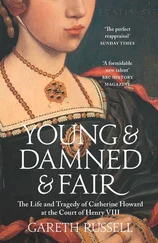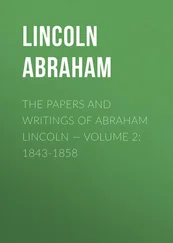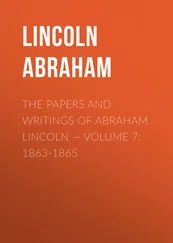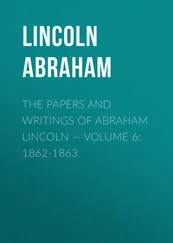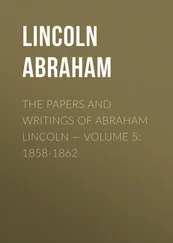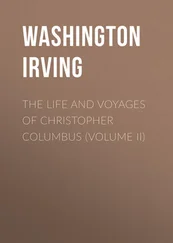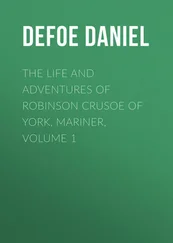Henry Fuseli - The Life and Writings of Henry Fuseli, Volume 2 (of 3)
Здесь есть возможность читать онлайн «Henry Fuseli - The Life and Writings of Henry Fuseli, Volume 2 (of 3)» — ознакомительный отрывок электронной книги совершенно бесплатно, а после прочтения отрывка купить полную версию. В некоторых случаях можно слушать аудио, скачать через торрент в формате fb2 и присутствует краткое содержание. Жанр: visual_arts, foreign_antique, foreign_prose, на английском языке. Описание произведения, (предисловие) а так же отзывы посетителей доступны на портале библиотеки ЛибКат.
- Название:The Life and Writings of Henry Fuseli, Volume 2 (of 3)
- Автор:
- Жанр:
- Год:неизвестен
- ISBN:нет данных
- Рейтинг книги:5 / 5. Голосов: 1
-
Избранное:Добавить в избранное
- Отзывы:
-
Ваша оценка:
- 100
- 1
- 2
- 3
- 4
- 5
The Life and Writings of Henry Fuseli, Volume 2 (of 3): краткое содержание, описание и аннотация
Предлагаем к чтению аннотацию, описание, краткое содержание или предисловие (зависит от того, что написал сам автор книги «The Life and Writings of Henry Fuseli, Volume 2 (of 3)»). Если вы не нашли необходимую информацию о книге — напишите в комментариях, мы постараемся отыскать её.
The Life and Writings of Henry Fuseli, Volume 2 (of 3) — читать онлайн ознакомительный отрывок
Ниже представлен текст книги, разбитый по страницам. Система сохранения места последней прочитанной страницы, позволяет с удобством читать онлайн бесплатно книгу «The Life and Writings of Henry Fuseli, Volume 2 (of 3)», без необходимости каждый раз заново искать на чём Вы остановились. Поставьте закладку, и сможете в любой момент перейти на страницу, на которой закончили чтение.
Интервал:
Закладка:
Whilst Michael Angelo was doomed to lament the perversion of his style, death prevented Raphael from witnessing the gradual decay of his. The exuberant fertility of Julio Pipi called Romano, 46 46 Julio Pipi, called Romano, died at Mantoua in 1546, aged 54.
and the less extensive but classic taste of Polydoro da Caravagio deserted indeed the standard of their master, but with a dignity and magnitude of compass which command respect. It is less from his tutored works in the Vatican, than from the colossal conceptions, the pathetic or sublime allegories, and the voluptuous reveries which enchant the palace del T, near Mantoua, that we must form our estimate of Julio's powers; they were of a size to challenge all competition, had he united purity of taste and delicacy of mind with energy and loftiness of thought; as they are, they resemble a mighty stream, sometimes flowing in a full and limpid vein, but oftener turbid with rubbish. He has left specimens of composition from the most sublime to the most extravagant; to a primeval simplicity of conception in his mythologic subjects, which transports us to the golden age of Hesiod, he joined a rage for the grotesque; to uncommon powers of expression a decided attachment to deformity and grimace, and to the warmest and most genial imagery the most ungenial colour.
With nearly equal, but still more mixed fertility, Francesco Primaticcio 47 47 Francesco Primaticcio, made Abbé de St. Martin de Troyes, by Francis, I., died in France 1570, aged 80.
propagated the style and the conceptions of his master Julio on the Gallic side of the Alps, and with the assistance of Nicolo, commonly called Dell' Abbate after him, filled the palaces of Francis I. with mythologic and allegoric works, in frescoes of an energy and depth of tone till then unknown. Theirs was the cyclus of pictures from the Odyssea of Homer at Fontainbleau, a mine of classic and picturesque materials: they are destroyed, and we may estimate their loss, even through the disguise of the mannered and feeble etchings of Theodore Van Tulden.
The compact style of Polydoro, 48 48 Polydoro Caldara da Caravaggio was assassinated at Messina in 1543, aged 51.
formed on the antique, such as it is exhibited in the best series of the Roman military bassrelievoes, is more monumental, than imitative or characteristic. But the virility of his taste, the impassioned motion of his groups, the simplicity, breadth, and never excelled elegance and probability of his drapery, with the forcible chiaroscuro of his compositions, make us regret the narrowness of the walk to which he confined his powers.
No painter ever painted his own mind so forcibly as Michael Angelo Amerigi, surnamed Il Caravaggi. 49 49 Michael Angelo Amerigi, surnamed Il Caravaggi, knight of Malta, died 1609, aged 40.
To none nature ever set limits with a more decided hand. Darkness gave him light; into his melancholy cell light stole only with a pale reluctant ray, or broke on it, as flashes on a stormy night. The most vulgar forms he recommended by ideal light and shade, and a tremendous breadth of manner.
The aim and style of the Roman school deserve little further notice here, till the appearance of Nicolas Poussin 50 50 Nicolas Poussin, of Andely, died at Rome 1665, aged 71.
a Frenchman, but grafted on the Roman stock. Bred under Quintin Varin, a French painter of mediocrity, he found on his arrival in Italy that he had more to unlearn than to follow of his master's principles, renounced the national character, and not only with the utmost ardour adopted, but suffered himself to be wholly absorbed by the antique. Such was his attachment to the ancients, that it may be said he less imitated their spirit than copied their relics and painted sculpture; the costume, the mythology, the rites of antiquity were his element; his scenery, his landscape, are pure classic ground. He has left specimens to show that he was sometimes sublime, and often in the highest degree pathetic, but history in the strictest sense was his property, and in that he ought to be followed. His agents only appear, to tell the fact; they are subordinate to the story. Sometimes he attempted to tell a story that cannot be told: of his historic dignity the celebrated series of Sacraments; of his sublimity, the vision he gave to Coriolanus; of his pathetic power, the infant Pyrrhus; and of the vain attempt to tell by figures what words alone can tell, the testament of Eudamidas, are striking instances. His eye, though impressed with the tint, and breadth, and imitation of Titiano, seldom inspired him to charm with colour; crudity and patches frequently deform his effects. He is unequal in his style of design; sometimes his comprehension fails him; he supplies, like Pietro Testa, ideal heads and torsos with limbs and extremities transcribed from the model. Whether from choice or want of power he has seldom executed his conceptions on a larger scale than that which bears his name, and which has perhaps as much contributed to make him the darling of this country, as his merit.
The wildness of Salvator Rosa 51 51 Salvator Rosa, surnamed Salvatoriello, died at Rome 1673, aged 59.
opposes a powerful contrast to the classic regularity of Poussin. Terrific and grand in his conceptions of inanimate nature, he was reduced to attempts of hiding by boldness of hand, his inability of exhibiting her impassioned, or in the dignity of character: his line is vulgar: his magic visions, less founded on principles of terror than on mythologic trash and caprice, are to the probable combinations of nature, what the paroxysms of a fever are to the flights of vigorous fancy. Though so much extolled and so ambitiously imitated, his banditti are a medley made up of starveling models, shreds and bits of armour from his lumber-room, brushed into notice by a daring pencil. Salvator was a satyrist and a critic, but the rod which he had the insolence to lift against the nudities of Michael Angelo, and the anachronism of Raphael, would have been better employed in chastising his own misconceptions.
The principle of Titiano, less pure in itself and less decided in its object of imitation, did not suffer so much from its more or less appropriate application by his successors, as the former two. Colour once in a very high degree attained, disdains subordination and engrosses the whole. Mutual similarity attracts, body tends to body, as mind to mind, and he who has once gained supreme dominion over the eye, will hardly resign it to court the more coy approbation of mind, of a few opposed to nearly all. Add to this the character of the place and the nature of the encouragement held out to the Venetian artists. Venice was the centre of commerce, the repository of the riches of the globe, the splendid toy-shop of the time: its chief inhabitants princely merchants, or a patrician race elevated to rank by accumulations from trade, or naval prowess; the bulk of the people, mechanics or artisans, administering the means, and in their turn fed by the produce of luxury. Of such a system, what could the art be more than the parasite? Religion itself had exchanged its gravity for the allurements of ear and eye, and even sanctity disgusted, unless arrayed by the gorgeous hand of fashion. – Such was, such will always be the birth-place and the theatre of colour: and hence it is more matter of wonder that the first and greatest colourists should so long have foreborne to overstep the modesty of nature in the use of that alluring medium, than that they yielded by degrees to its golden solicitations. 52 52 Of the portraits which Raphael in fresco scattered over the compositions of the Vatican, we shall find an opportunity to speak. But in oil the real style of portrait began at Venice with Giorgione, flourished in Sebastian del Piombo, and was carried to perfection by Titiano, who filled the masses of the first without entangling himself in the minute details of the second. Tintoretto, Bassan, and Paolo of Verona, followed the principle of Titiano. After these, it migrated from Italy to reside with the Spaniard Diego Velasquez; from whom Rubens and Vandyck attempted to transplant it to Flanders, France, and England, with unequal success. France seized less on the delicacy than on the affectation of Vandyck, and soon turned the art of representing men and women into a mere remembrancer of fashions and airs. England had possessed Holbein, but it was reserved for the German Lely, and his successor Kneller, to lay the foundation of a manner, which, by pretending to unite portrait with history, gave a retrograde direction for near a century to both. A mob of shepherds and shepherdesses in flowing wigs and dressed curls, ruffled Endymions, humble Junos, withered Hebes, surly Allegroes, and smirking Pensierosas, usurped the place of truth, propriety and character. Even the lamented powers of the greatest painter whom this country and perhaps our age produced, long vainly struggled, and scarcely in the eve of life succeeded to emancipate us from this dastard taste.
Интервал:
Закладка:
Похожие книги на «The Life and Writings of Henry Fuseli, Volume 2 (of 3)»
Представляем Вашему вниманию похожие книги на «The Life and Writings of Henry Fuseli, Volume 2 (of 3)» списком для выбора. Мы отобрали схожую по названию и смыслу литературу в надежде предоставить читателям больше вариантов отыскать новые, интересные, ещё непрочитанные произведения.
Обсуждение, отзывы о книге «The Life and Writings of Henry Fuseli, Volume 2 (of 3)» и просто собственные мнения читателей. Оставьте ваши комментарии, напишите, что Вы думаете о произведении, его смысле или главных героях. Укажите что конкретно понравилось, а что нет, и почему Вы так считаете.



